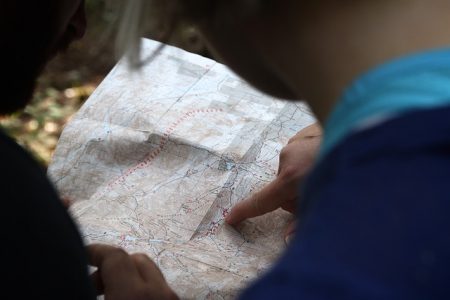
The Customer Journey: Walk In Your Customers’ Shoes
The world of digital commerce is a seemingly never-ending cycle of new technology, design trends, strategic branding opportunities, and the occasional big hit (or miss) that rattles the industry for a brief period of time. If you to think back 15 years ago to the animated Flash homepage trend, you might cringe. But at the time, that is what everyone was doing…for better or worse!
All About the Customer
The one thing that has never changed is that the customer is the focus of digital commerce. From the first online storefronts to today’s unified experiences, convenience and a high level of service have ruled the day. Successful digital businesses know that without knowing how customers shop – or want to shop – it’s difficult to build an experience that makes it easier and more compelling for them to do so.
When we understand the customer, we are able to tailor the online experience to suit their needs. Creating a holistic, 360-degree customer experience begins with first understanding the customer journey: the end-to-end experience that a consumer has with your brand.
This journey may not even begin on your website. A customer may find your site through an advertisement, or from a marketing email, or maybe by referral. No matter how they enter the site, it is important that they receive a satisfactory experience that will compel them to purchase and come back again later.
A Customer Journey in Action
The customer journey is designed to help us visualize the shopping experience as a path: a roadmap with a beginning, a middle, and an end. In the beginning, we have a need. For example, a potential customer realizes that they need a new shirt for an upcoming wedding.
Their journey encompasses every step along the way towards getting that new shirt. Perhaps this means researching different styles and fits online, determining which colors look best, analyzing prices and materials, and then perusing retailers for their ideal shirt.
The journey doesn’t just end at a purchase, though. Even after our hypothetical friend picks up their shirt, they still then go and wear it, develop an opinion on the shirt, and perhaps even share that with friends or online. A few weeks later, the brand might send a promotional email offering discounts and refreshing the image of the brand in their mind. As you can see, the customer journey is a cyclical, ongoing process, not just a path to conversion.
Different Customers, Different Journeys
By identifying the journeys for various key customer types, you are able to identify friction points, analyze behaviors, recommend solutions and track results. A good journey map helps you identify what motivates your customers, identify key actions at critical points in the experience, and create awareness to obstacles that may be interfering with their overall satisfaction.
Breaking these maps and journeys up by customer segment is a critical component of success. Across demographics, technologies, and geographies, people shop in very different ways. First, businesses must understand who their key customer cohorts are before they can develop an accurate picture of their journeys.
Hard Work, But Worth the Effort
Trends in digital commerce may come and go, but no matter what the future holds, we cannot overstate the importance of understanding the needs of your customer.
Using customer journeys as part of a broader toolset to predict customer behavior, needs, and intent is a critical step to driving engagement, retaining customers, and growing your digital business.
